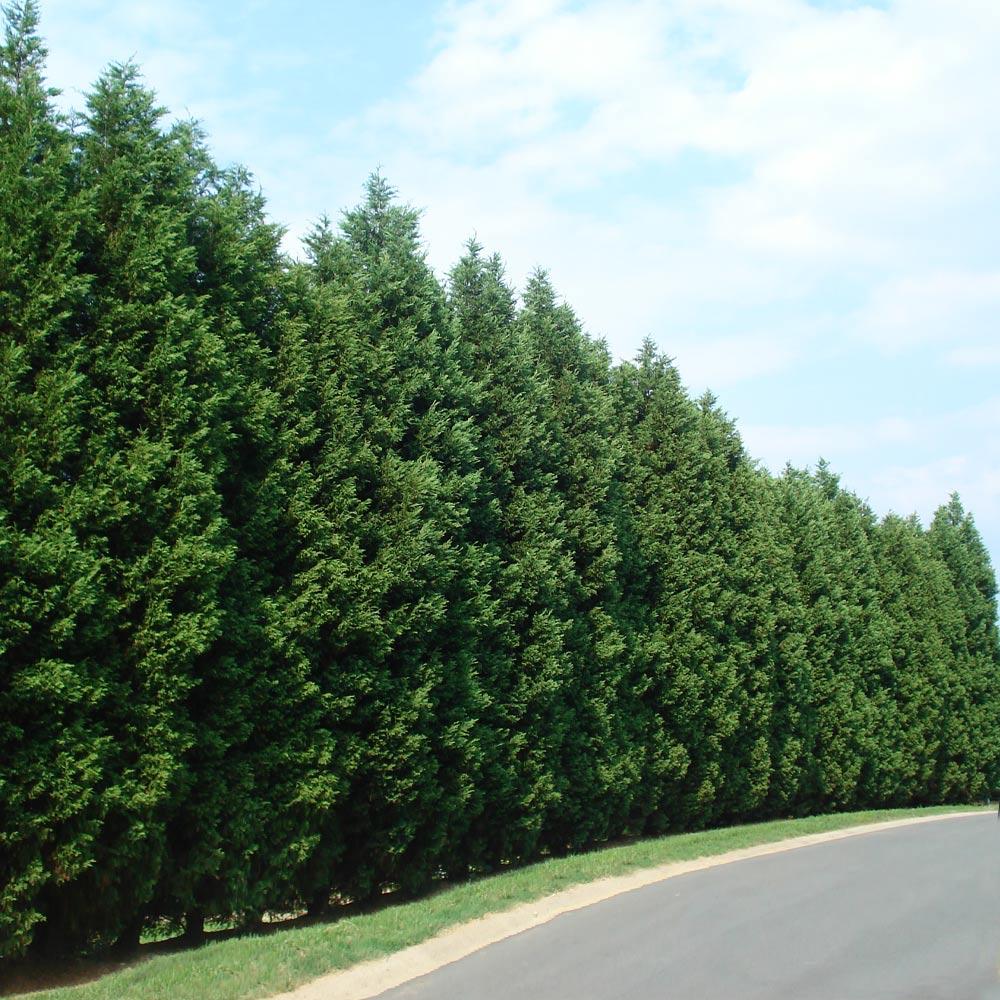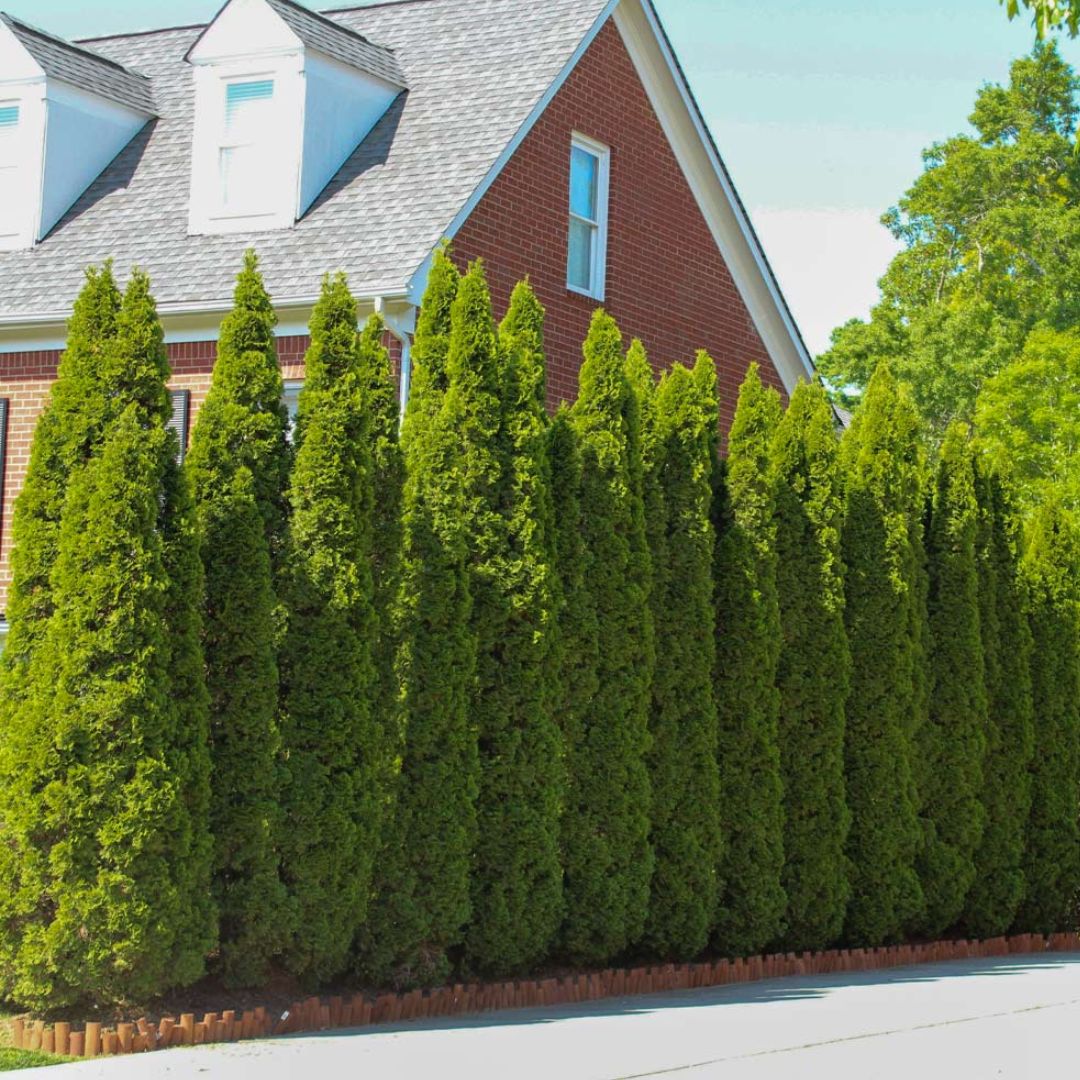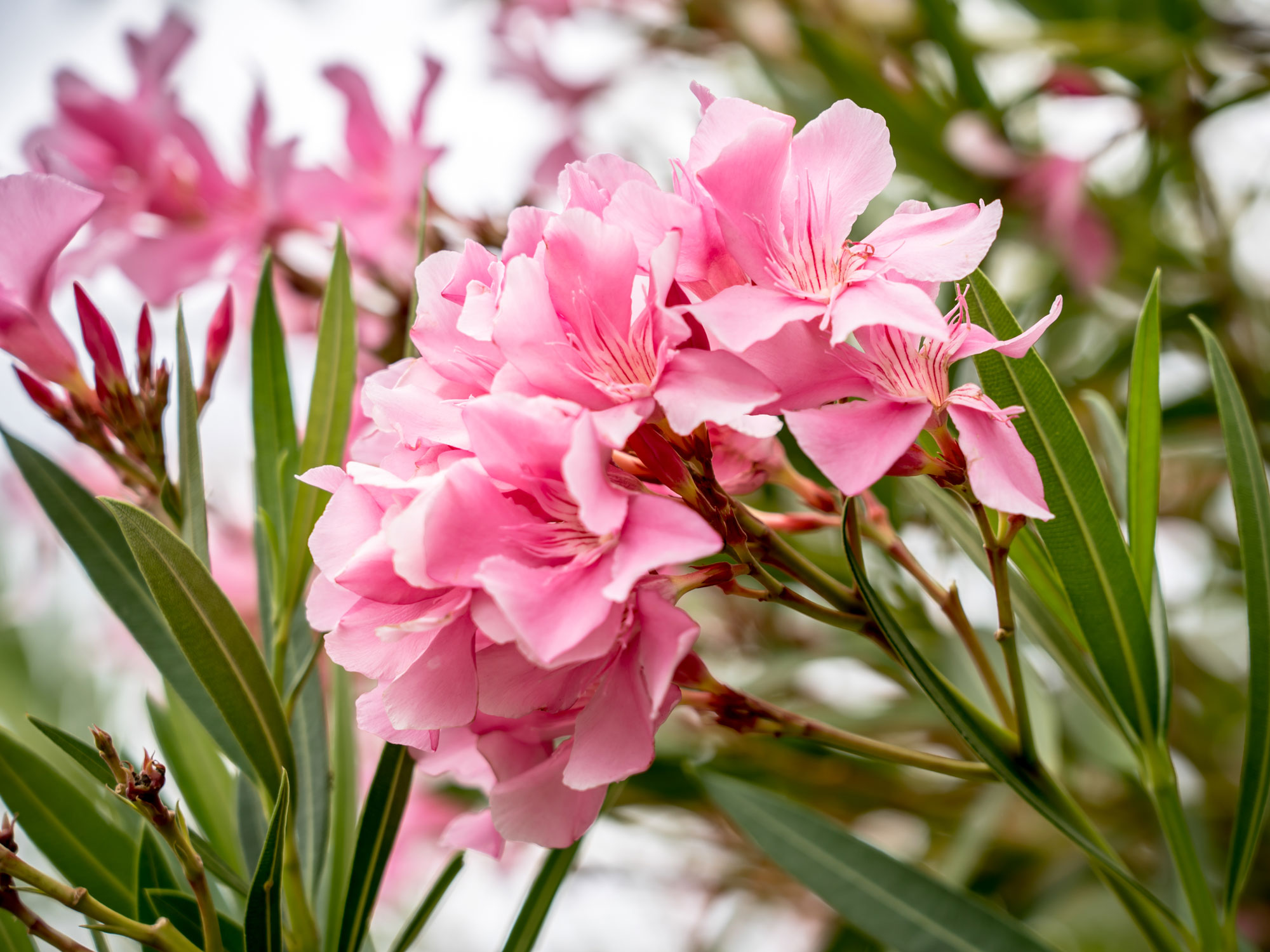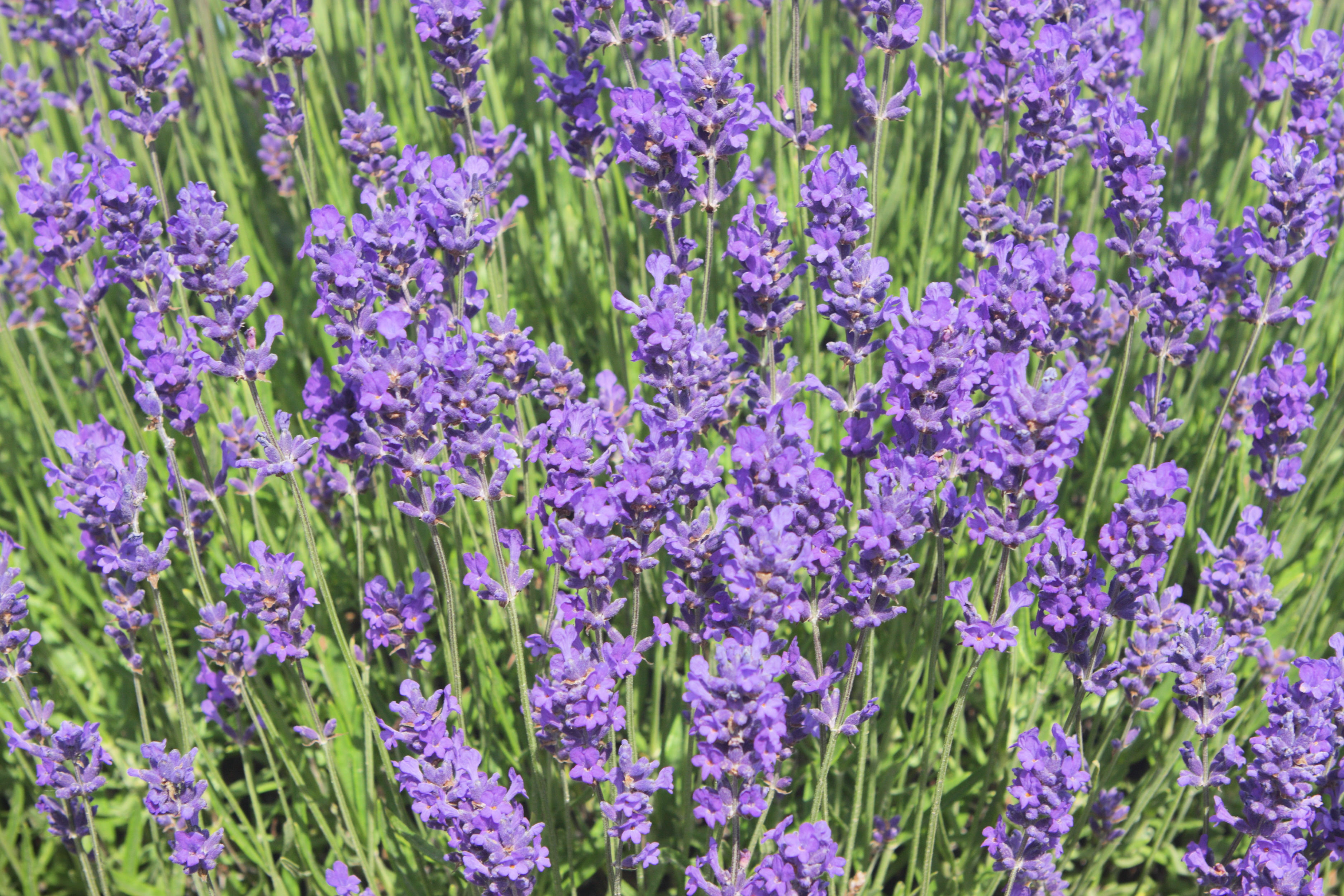
Summer calls for time spent outdoors. Perhaps you're entertaining or maybe just soaking in the solitude in the comfort of your outdoor space. Whatever the occasion, the last thing you need is a curious neighbor eyeing your backyard.
Privacy is key to any living space and while it's easy to keep out of sight within the walls of your home, you should have the luxury of feeling just as relaxed in your backyard. And what better way to do so than with a hedge or two?
If you want to learn how to use the best privacy plants in a backyard and you're looking for options that are low-maintenance and drought-tolerant, these expert-approved plants should be at the top of your list.
1. Leyland Cypress

According to plant expert Allison Jacob, first on the list of drought-tolerant plants to consider is the leyland cypress. 'This fast grower is ideal for those needing quick privacy,' she says. 'You'll see 3 to 5 feet of new growth each year, with mature trees reaching up to 70 feet tall and spreading 15 to 25 feet wide.'
Allison tells us that they're especially perfect for larger outdoor spaces. 'Leyland Cypresses love full sun and need well-draining soil to thrive,' she notes. 'Plant them at least 10 feet apart and keep pruning tools handy to maintain their shape.'
Whether you're looking for garden or front yard privacy ideas, this gorgeous green shrub is a lovely addition.
Hardiness Zones: 6-10
2. Emerald Green Arborvitae

As one of the best trees for a fence line, emerald green arborvitae hedges are both incredibly thick with foliage and very easy to care for.
Allison tells us that this plant works wonders for smaller areas. 'These compact plants grow into a neat columnar shape, adding 6 to 9 inches of height annually,' she says. 'They max out around 15 feet tall and stay slim at just 3 to 4 feet wide.'
She tells us that they're hardy too, handling cold winters with ease. 'Give them a sunny to partly shady spot, water deeply their first year, and add a layer of mulch,' she says. 'And treat them to a quick trim in early spring to keep them looking neat.'
Hardiness Zones: 3-8
3. Hicks Yew

Living privacy fences beautify your space while also shielding your home from the surrounding area. And if you want a dense, green wall that's drought-tolerant, Allison says that the Hicks Yew is an excellent choice.
'These steady growers add 6 to 12 inches a year, eventually reaching 10 to 12 feet tall,' she says. 'They're adaptable, growing well in full sun or partial shade and various soil types.'
Allison's pro tip is to give them a little TLC in the form of regular pruning to help them form a thick, luxurious hedge.
Hardiness Zones: 4-7
4. Oleander

Gardening expert Tony O'Neill is a big believer in using lush plants as privacy hedges and he recommends planting oleander. 'Oleander is incredibly drought-tolerant and can thrive in poor soil conditions,' he explains. 'It has beautiful, showy flowers and dense foliage that provides excellent privacy.'
Tony recommends planting oleander in full sun and watering regularly until established. To keep your oleander in perfect shape, he also advises gardeners to prune after flowering. This is a great option if you're looking for more than just a dense screen of green.
Landscaping expert Ward Dilmore also finds oleander to be a great privacy hedge and tells us that oleander is a very tough plant, which makes it great for edges of the property that get full sun or in the back of a garden to establish a large backdrop of color. 'There are varieties available in red, white, and pink flowers that bloom throughout summer,' he adds.
Hardiness Zones: 8-10
5. Texas Sage

Also known as leucophyllum frutescens, Texas sage is a charming green plant that is perfect for privacy screening. It sits among the category of plants that like full sun and heat, which in turn makes it fairly unfussy.
Tony tells us that this shrub is highly drought-tolerant and thrives in hot, dry climates. 'It has silvery foliage and blooms with purple flowers,' he notes. 'Making it both functional and decorative.'
When planting Texas sage, he recommends sowing the seeds in well-draining soil and full sun. 'Water sparingly once established and prune lightly to shape as needed,' says Tony.
Hardiness Zones: 8-11
6. Boxwood

Boxwood is one of the more classic options for hedging and is very common across homes with plenty of outdoor space. And when they're not being used as topiaries, they're planted as hedges. And if you're not interested in planting them directly in the ground, that's no problem since they are one of the best shrubs for containers.
'Boxwood is versatile and can be shaped into formal hedges,' says Tony. 'It is relatively drought-tolerant once established.'
He recommends planting boxwood in well-draining soil with partial to full sun. 'Water regularly during the first growing season,' says Tony. 'And prune regularly to maintain shape.'
Hardiness Zones: 5-9
7. Lavender

Who knew that this stunning, great-smelling plant was a total triple threat with privacy being its other strength as a shrub? So if you've been wondering where to plant lavender, here's your sign to go for the borders.
'Lavender is not only drought-tolerant but also adds a lovely fragrance and flowers,' says Tony. 'While it is shorter than traditional hedges, it can still provide good privacy when planted densely.'
According to Tony, lavender thrives in well-draining soil and full sun. He also points out that it doesn't require much water once established. For manicured lavender hedges, Tony suggests pruning after flowering to maintain shape and encourage bushiness.
Hardiness Zones: 5-9
FAQs
How do you care for drought-tolerant privacy hedges?
In conversation with Tony, he tells us that fertilizing and mulching are brilliant ways to take care of privacy hedges, even those that are more drought-tolerant. 'Use a slow-release fertilizer in the spring to promote healthy growth,' he says. 'Avoid over-fertilizing, as it can lead to excessive growth that requires more water.'
And when it comes to mulching, he recommends applying a layer around the base of the plants to retain moisture and suppress weeds.
When should you prune drought-tolerant hedges?
Tony explains that regular pruning helps maintain the shape and encourages dense growth. And he recommends pruning privacy hedges after flowering or during the dormant season, depending on the plant.
Not only does regular pruning keep the plant healthy, but it also gives your outdoor space a clean finish.







